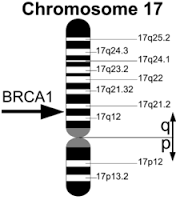Hi everyone! Here I am with my second post of my blog. This time around I am going to talk about the great technology we know at this stage of live.
As sad as it might sound, many of you had to deal with some kind of cancer. Maybe it affected you mother, sister, aunt, friend, grandmother, father, uncle or brother. Some of the cancers can be hereditary such as breast cancer. This means that a specific gene in your genetic material is responsible for this disease. In case of breast cancer we talk about a mutation (changes in the genetic material) of the BRCA1 of BRCA2 gene.
When someone knows that this kind of hereditary disease runs in his/her family, it can be helpful to go to a hospital and perform a screening on those specific genes. This genetic testing uses allele-specific oligonucleotide. This is a piece of synthetic DNA complementary to the sequence of the target DNA. Allele-specific means that it will bound specifically to one site or allele of the chromosome. In case of BRCA we talk about chromosome 17 were the gene is located.
A positive result is not the best news but is also give some sort of warning. Having the BRCA gene doesn’t directly mean you have of going to have breast cancer. A yearly check-up will be advised so if the cancer comes to expression it can be treated a soon as possible.
This is some kind of prevention that can make quit a difference.
Quote of the day: What does not kill us makes us stronger. – Friedrich Nietzsche
See you next time
Jooske

